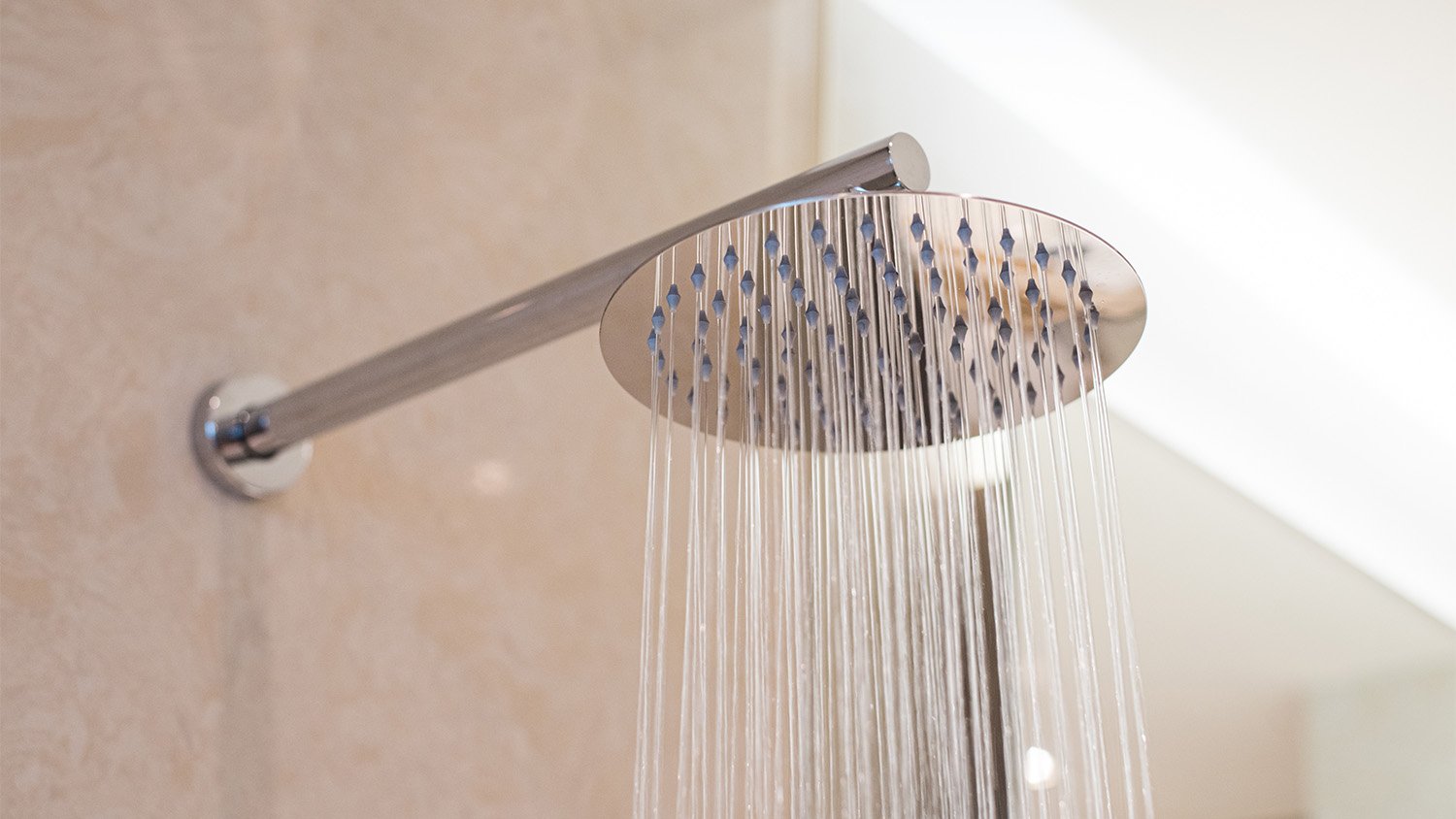Does Shower Steam Affect Paint?
Learn how to protect your bathroom paint from shower steam


Shower steam can cause paint to peel, bubble, and grow mold and mildew.
Glossy paint offers better moisture protection than matte and flat paint.
Light paint colors don't run as easily as dark paint colors.
Using an exhaust fan during and after your shower helps protect your walls from moisture damage.
Shower steam can significantly affect your bathroom's paint. Over time, moisture from the steam seeps into the paint, creating bubbling, peeling, and other unwanted textures. Steam can also lead to mold, deteriorating the paint and making for an unsightly appearance.
Fortunately, there are several things you can do to protect your walls and prolong your paint's lifespan, including choosing the right paint color, type, and application technique. Let’s take a look at everything you need to know to keep your bathroom paint intact.
Which Paint Types Are Best at Resisting Steam Damage?
While steam will affect virtually every type of paint if given enough time, some paint sheens can stand up to steam better than others, such as full-gloss and semi-gloss paint.
Full-Gloss Paint
Full-gloss paints offer the best protection against moisture damage. Once cured, glossy finishes create a hard coat that resists water absorption, allowing water to drip to the floor rather than seep into your walls. Full-gloss paints tend to be the easiest paint type to clean, usually requiring a quick wipe-down to get rid of dirt and smudges.
Semi-Gloss Paint
Semi-gloss paint is also moisture-resistant and easy to clean, making it a great option for the bathroom. It's not quite as resistant to moisture as full-gloss paint, but it still stands up pretty well to water droplets, so it's a good alternative if you don't want the shiny appearance of high-gloss paint.
Satin Paint
Satin paint resists moisture better than matte, flat, and eggshell paint, but not as well as full- and semi-gloss paint. Once it’s cured, satin paint develops a slight protective coating though it's not as hard as semi- and full-gloss coatings. It's also not as easy to clean as its glossier counterparts, but it dries faster and offers a more subtle sheen.
Should I Use Matte, Eggshell, or Flat Paint in My Bathroom?
Most professional painters discourage people from using matte, eggshell, and flat paints in the bathroom since they're prone to moisture absorption, mold, and mildew. They're also much more challenging to clean than glossier alternatives.
With that said, paint technology improvements have led to the development of mildew-resistant matte paint, which can prolong its lifespan in the bathroom and make it easier to clean. But not all of these paint types are mildew-resistant, so if your heart is set on a matte finish, make sure your chosen type can resist mildew.
Does Paint Color Affect Shower Steam Damage?

Some paint colors are prone to "pigmentation run," wherein steam causes the paint to run down the wall, discoloring it. Since lighter colors contain less pigment, they're not as likely to run as their darker, more saturated counterparts.
So, if you're painting a primary bathroom that gets quite a bit of daily use, then a lighter color is a good option. Powder rooms and bathrooms that don't have as much foot traffic will often do fine with darker paint colors.
What Else Can I Do to Protect My Paint From Shower Steam?
Beyond choosing moisture-resistant paint types and run-resistant colors, there are a couple of additional measures you can take to protect your walls from shower steam damage.
Use a Paint Primer
Primers help bond the paint to the wall and prevent it from peeling, so you should always apply primer to your bathroom walls before painting them. Primer is especially important for matte and low-sheen paint since these types are more prone to moisture damage, but it's helpful to use a primer with any paint type. Some primers also come with mildewcide additives that further protect your walls from moisture damage.
Avoid Exterior Paint
Since exterior paint tends to offer more moisture resistance than interior paint, it's tempting to use it to paint your bathroom. However, some exterior paints come with additives, like hazardous amounts of mildewcide, which can harm your health with prolonged exposure, so your safest bet is to stick with paints designed for indoor use.
Incorporate a Fan
Turning on the bathroom exhaust fan during your showers can help keep your walls dry and prolong your paint's lifespan. Ideally, you should turn the fan on right before your shower and leave it on for 20 to 30 minutes after you're finished. It's also helpful to open a window during and after your shower.





- What Is the Best Paint Sheen for Kitchens?
- What Type of Paint and Finish Is Best for Bathrooms?
- The Best Bathroom Ceiling Paint
- The 7 Best Paint Sheens for Your Bedroom
- Best Paint Finish For Bathroom: A Complete Guide
- The Ultimate Guide to the 5 Types of Paint Finishes
- The 5 Best Paint Sheens for Bathrooms
- Best Paint for Walls: Which Type Is Right for Your Project?
- What Is the Best Exterior Paint? Here Are the Top 6 Choices
- What’s the Difference Between Satin and Semi-Gloss Paint?










